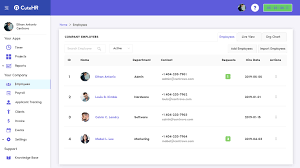What Does CPM Stand for in Advertising? A Complete Guide to Cost Per Mille

If you’ve ever explored online marketing or digital ad buying, you’ve likely come across the term CPM. But what does CPM stand for in advertising, and why is it important for your business or marketing campaign? In this guide, we break down everything you need to know about CPM, including its definition, how it works, and why advertisers use it to measure campaign performance.
Understanding CPM in Advertising
What Does CPM Stand for in Advertising? CPM stands for “Cost Per Mille,” with “mille” being the Latin word for a thousand. In advertising terms, it refers to the cost per thousand impressions. When you purchase ad space using CPM, you’re paying a fixed amount for every 1,000 views (or impressions) of your ad, regardless of whether users click on it. This makes it a powerful metric for brand awareness campaigns that aim to reach as many people as possible.
How CPM Works
When an advertiser wants to display an ad online, they can choose to pay by impressions (CPM), clicks (CPC), or conversions (CPA). With CPM, the advertiser pays a flat rate for every 1,000 impressions the ad receives. For example, if the CPM rate is $5, and your ad gets 50,000 impressions, you’ll pay $250.
This pricing model is ideal for campaigns focused on brand awareness rather than direct response or click-based metrics. It helps advertisers reach a large audience efficiently, especially when the goal is visibility rather than interaction.
Why CPM Matters in Digital Marketing
Understanding what CPM stands for in advertising is crucial because it helps marketers measure the reach of their ads without being tied to user interaction. This is particularly important for campaigns aiming to build visibility or reach a broad audience. CPM offers consistent pricing, helping advertisers forecast their budgets and campaign reach more accurately.
Some key benefits of CPM include:
- Predictable costs
- Ideal for awareness campaigns
- Scalable reach across digital platforms
- Common in display, video, and social media ads
CPM vs CPC vs CPA
It’s essential to distinguish CPM from other pricing models:
- CPC (Cost Per Click): You pay only when someone clicks on your ad.
- CPA (Cost Per Action): You pay when a user takes a specific action (like signing up or making a purchase).
- CPM (Cost Per Mille): You pay for ad views, not interactions.
If your goal is exposure, CPM is the right fit. If you’re aiming for conversions or clicks, CPC or CPA may offer better performance. However, CPM often works well at the top of the funnel in multi-step sales or lead-generation processes.
How to Calculate CPM
To calculate your CPM, use the following formula: CPM = (Total Ad Spend / Total Impressions) x 1000
For example, if you spend $200 and get 40,000 impressions: CPM = ($200 / 40,000) x 1000 = $5.00
This calculation helps advertisers manage their budgets and evaluate cost-effectiveness across campaigns. It also allows marketers to compare CPM across multiple platforms to determine which delivers the best value.
Industry Benchmarks for CPM
CPM rates vary depending on platform, industry, and ad format. Here are general benchmarks:
- Facebook Ads: $5–$12 CPM
- Google Display Network: $2–$5 CPM
- YouTube Video Ads: $10–$30 CPM
- Instagram Stories: $3–$8 CPM
- LinkedIn Sponsored Content: $6–$9 CPM
- TikTok Ads: $10–$15 CPM
Knowing these ranges helps you understand whether your campaign is performing efficiently compared to industry standards. However, it’s also important to balance CPM with engagement metrics to ensure true effectiveness.
When Should You Use CPM?
CPM is most effective when your campaign objective is to:
- Build brand recognition
- Promote a product launch
- Increase visibility in new markets
- Drive traffic at scale
- Generate buzz or awareness about an event or campaign
It’s especially valuable in programmatic advertising and media buying for large audiences where awareness is the key metric. CPM campaigns are often used at the top of the marketing funnel to set the stage for deeper engagement later.
Tips to Optimize Your CPM Campaigns
To get the most value from a CPM model, follow these best practices:
- Target the right audience – Use demographic, geographic, and behavioral data.
- Use compelling visuals – Strong creative improves engagement and viewability.
- A/B test ads – Test variations to see what generates the best response and lowest effective CPM.
- Track viewability – Ensure your ads are being seen, not just loaded.
- Set frequency caps – Avoid overexposing your audience to the same ad to prevent fatigue.
- Leverage retargeting – Combine awareness with conversion by retargeting users who viewed the ad.
- Monitor performance in real-time – Adjust bidding and creatives for better delivery.
What Does CPM Stand for in Advertising on Different Platforms?
Different platforms use CPM pricing in unique ways:
- Facebook: CPM is commonly used for impressions in brand awareness and reach campaigns, with options to narrow targeting based on behavior and interests.
- Google Ads: The Google Display Network allows for CPM bidding for impressions on banners, native ads, and YouTube pre-roll.
- YouTube: CPM applies to skippable and non-skippable in-stream video ads, especially effective in reach and frequency campaigns.
- Instagram: CPM is calculated per 1,000 views on stories, reels, and sponsored posts, helping you reach highly visual audiences.
- LinkedIn: Best for B2B awareness, with higher CPMs but better targeting among professionals.
Understanding these variations helps you plan and measure across your multi-channel campaigns. It ensures your budget allocation aligns with platform performance and campaign goals.
Pros and Cons of CPM Advertising
Pros:
- Great for awareness
- Easy to forecast budget
- Broad reach potential
- Platform flexibility
- Helps launch new brands or initiatives
Cons:
- No guarantee of engagement
- Can be inefficient if impressions aren’t well targeted
- May lead to wasted spend without strong creative
- Viewability challenges on some platforms
The Future of CPM in Digital Advertising
With the rise of AI and data-driven platforms, CPM will continue to evolve. Improved targeting, real-time bidding, and advanced analytics are making CPM campaigns more effective. Advertisers now have tools to not only pay for impressions but ensure those impressions are meaningful.
Expect CPM to become more performance-based, where machine learning and first-party data improve accuracy. As privacy changes limit user tracking, CPM’s role in contextual and predictive advertising will grow significantly.
Conclusion
So, what does CPM stand for in advertising? It stands for Cost Per Mille — the price you pay for 1,000 impressions. It’s a foundational metric for brand awareness campaigns and a key tool in any digital marketer’s strategy. Whether you’re launching a new brand, expanding into new markets, or reinforcing brand identity, understanding and leveraging CPM can significantly boost your campaign success.
By tracking CPM closely, optimizing your targeting, and investing in strong creative, you can ensure your budget delivers maximum visibility. Always monitor your campaigns, compare performance across platforms, and use CPM strategically within a broader multi-touch marketing strategy to drive both awareness and results.
Need help optimizing your CPM strategy or choosing the right platforms? Work with an experienced digital agency or consultant to ensure your campaigns are driving measurable success.




